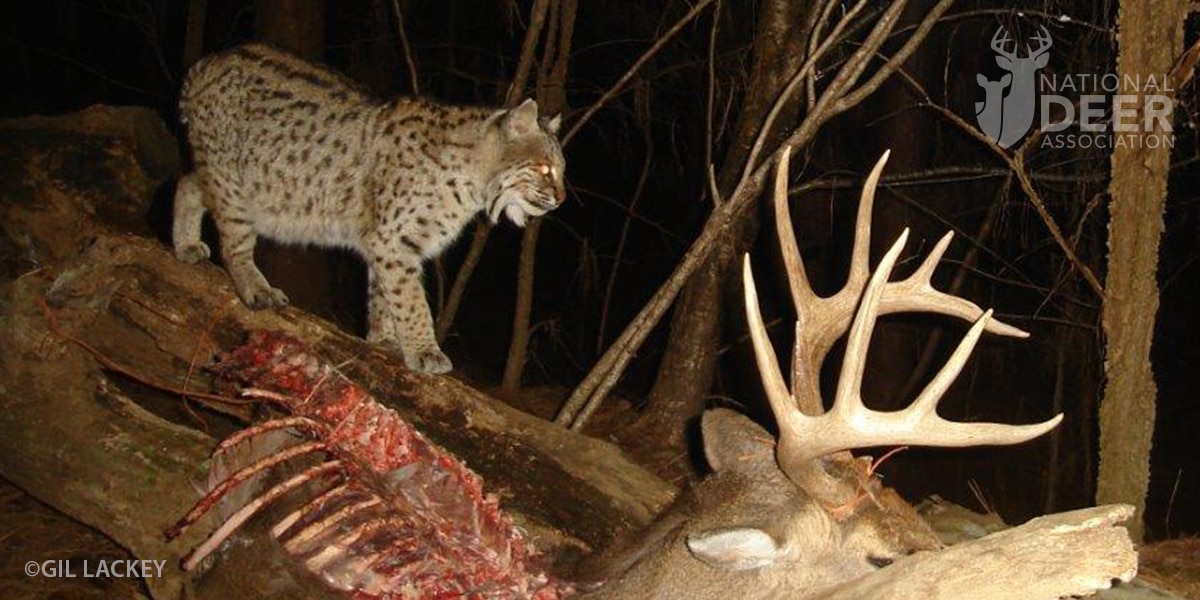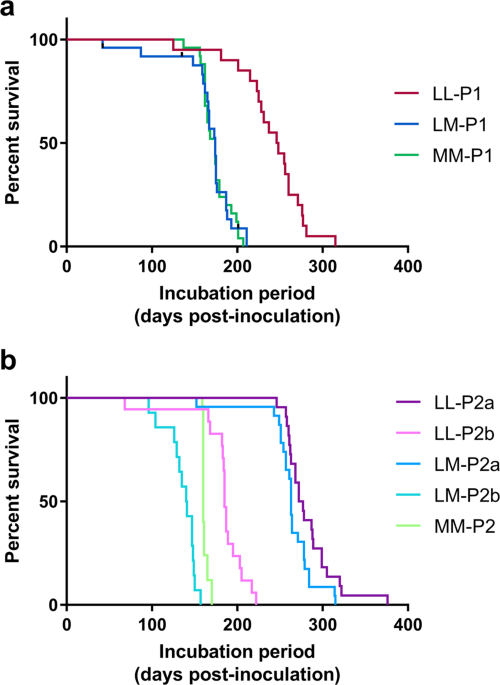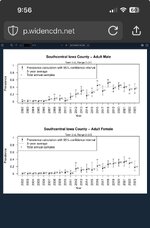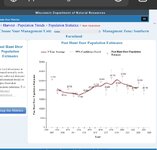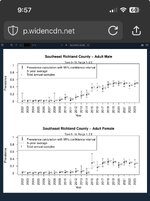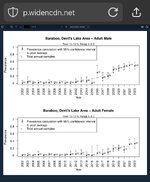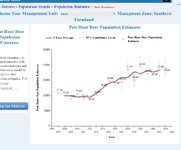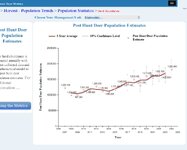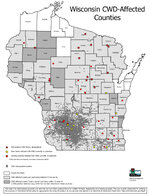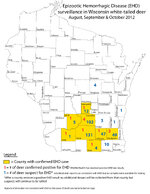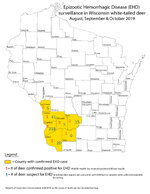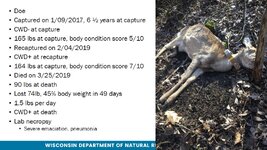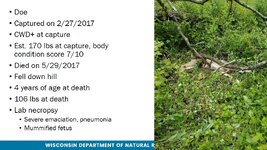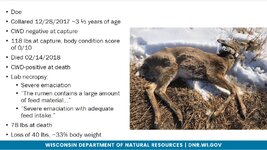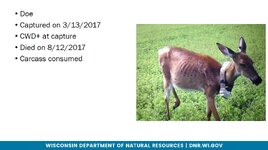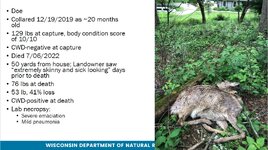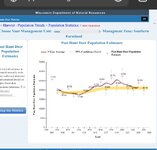First I would say, State wide population trends mean nothing when the overwhelming majority of CWD is in SW Wisconsin. In other words, A few cases in a county outside of the core outbreak zone is not going to impact populations and is completely irrelevant to the topic of population impacts.
View attachment 861761
But more to your question about data, I think the data paints a pretty clear picture and I predict Richland county will follow suit with Iowa counties decline. As will the other highly infected counties. Parts of Richland county already are, according to people I know who live and hunt there. Based on the positive tests coming out of Richland county that should be no surprise. But I think there’s little doubt about Iowa counties population decline being caused by CWD. But CWD isn’t done there yet, it’s still there, still working. Where will it level off? That I don’t know. No one does.
As the research has always said, the longer the disease stays at high prevalence, the more impacts will be seen and felt on the ground.
The podcast below: A hunter from southern Richland county has reported significant impacts to deer populations and age class. Again, with no EHD, no significant predators, no culling, and a relatively flat hunter harvest in county wide in Richland county (unlike Iowa county where it’s half of what it was in 2011). Yet, the other individual in northern Richland county still has a robust deer herd with high prevalence. But he expects that to start diminishing. Again, as has always been stated with CWD. There are no dramatic die offs all at once. Just a slow burn, peeling deer off. Well, if you believe the “experts” anyway.

Podcast Episode · North Dakota BHA Podcast · 03/04/2025 · 1h 55m

podcasts.apple.com
The two guys in that podcast live, hunt, and/or work in Richland and Iowa county. They can testify to no significant EHD outbreaks in SW Wisconsin. A few here and there, but nothing wide spread that would lead to any negative population impacts. A couple hundred deer in total across SW WI isn’t a significant EHD outbreak by any stretch of the imagination. It’s barely even worth mentioning. So even if the maps below for Iowa county EHD cases are off by 100 times, that amounts to nothing.
View attachment 861762
View attachment 861763
Both of the individuals in that podcast report seeing sick deer and deer populations being more significantly impacted the more you move south towards Iowa county. One of them describes a situation in Iowa county where in a 5 month period a landowner got a total of 10 pictures of deer on his trail cameras(of the same 4 deer) and that property is carpeted with seedling oaks. Some of the best whitetail habitat in the world, 4 deer and 10 pictures from summer to mid fall. And there’s no way you are able to have seedling oaks like that with a robust deer population in the area.
They both fully expect population impacts to start showing up more in the surrounding counties the longer the disease stays at high prevalence. And like I mentioned previously, one of them is already seeing those impacts on his family’s land and the surrounding neighbors, and he works for a trail camera company and has data points all over the area.
Like the recent Wisconsin research suggests, once prevalence is allowed to grow and persist, population impacts will be felt. As has been documented every time they slap GPS collars on animals and track mortality.
In Wisconsin’s case they collared over 1,000 deer. I think that’s a pretty good glimpse into what’s happening to sick deer.
View attachment 861772
View attachment 861773
View attachment 861774
View attachment 861775
View attachment 861776
As a side note, I also called and spoke with the Outfitter in the article below, you should try telling him CWD doesn’t have population impacts. He had to shut his deer outfitting operation down because of a lack of deer. When I asked him what he thinks about people like you saying it doesn’t impact populations or it’s a conspiracy, or generally trying to deny reality, he laughed and said “well, you should tell those !%*#*?%* to come down to where I live.”
View attachment 861769
And the GPS collar study mentioned in that article, 9 out of 10 bucks and 15 out of 30 does were dead inside of 15 months. They reported very little difference in winter survival in collared animals between 2023 the 2024 winters(see email below), so it wasn’t winter that killed the deer. Not a single collared deer was hunter harvested for the deer collared in 2023. So it wasn’t hunter harvest. I’ll be anxious to see the testing results when the data gets released. He did say that the landowners in the study area are all reporting the same thing as the outfitter in the article. Fewer deer. I’m sure it’s absolutely anything other than CWD….
The email I got when I asked about the winter survival:
View attachment 861770
I also talked to some folks at the WY Game and Fish, they confirmed and said minimal winter die off that far east of the Wyoming Range where the big die off occurred.
As another side note, one of the owners of this site did a podcast with Cody Robbin’s from Saskatchewan. They talked about CWD and the 80% prevalence they’re experiencing up there. What did he report? The opposite of a nothing burger like you suggest. Lower deer numbers and significantly impacted age structure. The conservation officers I spoke with in Saskatchewan say significantly lower deer numbers in South Saskatchewan and sick end stage CWD deer reported on the regular.
Now, let me pause here. Because I think anyone can see it is obvious nothing I or anyone else can say will change your mind. And I’ve dealt with plenty of the CWD denier crowd and all the variations in flavor. But it seems pretty clear to me that the more time that passes, the more it appears that the wildlife managers (biologists, veterinarians, CWD researchers) who have been warning us about CWD, were right. They have been telling us that the insidious nature of this disease means it will take decades for it to slowly build within a herd and in turn negatively impact the deer populations. And here we are, every year more and more people are reporting seeing sick deer and noticing changes to their deer populations. More and more GPS collar mortality data across the country backing that up. Yet, some just refuse to believe it’s possible, refuse to believe that what they’ve been telling us is coming true right before our eyes.
So while someone like you can point to the Wisconsin deer trends from the last 10-20 years and say “all is good”, the next 10-20 years will be much more telling. And if I’m picking a side on who’s going to be right, it ain’t going to be your side.
But by all means, keep on keeping on…

